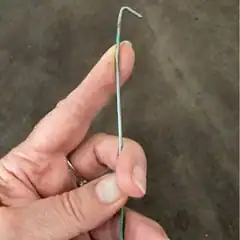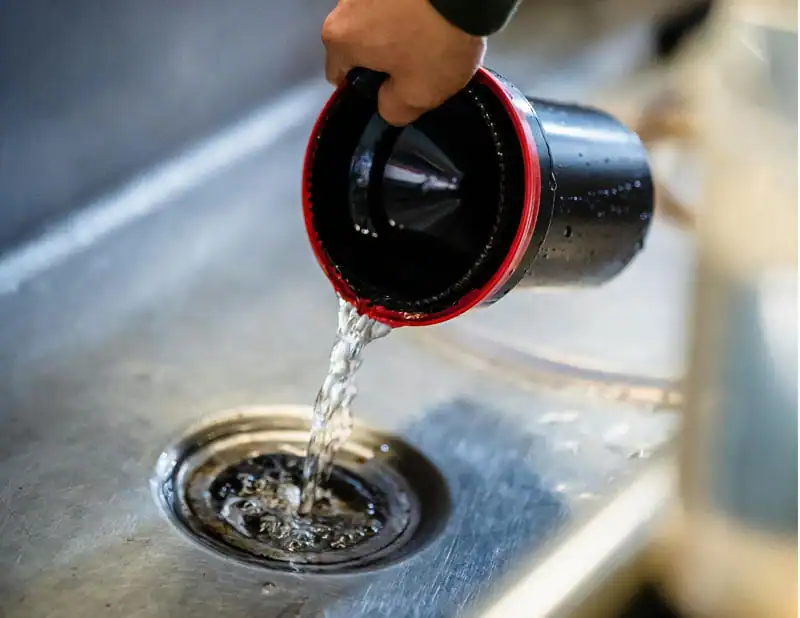I really dislike having to pour chemicals down the drain to clear out a clog. Another solution for some clogs is to use salt – but I’m not talking about common table salt (sodium chloride), but instead about baking soda, which is another salt: Sodium Bicarbonate. Using baking soda along with a mild acid like Vinegar can help break up and dissolve the buildup that is blocking the flow of water.
In this article, I wanted to talk about the benefits of using salt to unclog drains, the proper techniques to use it, and when it’s not the best solution. From the type of salt and vinegar to use, the amounts, and the precautions to take, I will be covering all of it so that you can confidently and effectively unclog drains using salt.
Why Pour Salt Down the Drain To Unclog It?
I prefer this method for minor clogs – and especially when the water is starting to run slowly through the drain in the tub, bathroom sink or even in the garbage disposal. A couple thoughts about why:
- I like to avoid pouring chemicals into water. Even though the municipal waste water treatment has methods of trying to remove chemicals that unclog drains, I like to not contribute to that, or to trace elements that might remain in the water.
- Baking soda and Vinegar are pretty affordable products. Buying the generic version of each is certainly fine when you intend to use them for cleaning.
- This combination of ingredients will also tend to reduce odors in your drain or garbage disposal.
- This method is actually rather fun … did you every get to do that science project in elementary school with the ‘volcano’? Here we are just putting that chemical reaction to better use.
How Much Salt Should I Pour Down the Drain?
CAUTION: Do not use this method if you have already poured some commercial drain cleaner into your drain and it did not work! Adding some more stuff and very hot water can cause the commercial drain cleaner to release fumes that you don’t want in your home.
Here are the steps to unclog drains:
- If you can pull out the drain stopper, you will do yourself a favor by physically removing any hair or other debris sticking onto the stopper. I know: EEWWWW! Do you have any plastic gloves left over from COVID? Use them. Also see my handmade tool suggestion at the bottom of this article.
- Pour 1/2 cup to 1 cup of baking soda (sodium bicarbonate) down into the drain.
- Pour 1/2 cup of Vinegar down the drain. Any kind of vinegar will work, but the least expensive is probably White Vinegar. If you’ve got an old (questionable) bottle of vinegar in the kitchen cabinet, now is the time to do something good with it! Even garden vinegar will work, although you might want to dilute it with some water.
- Immediately after pouring in the vinegar, plug the drain to keep the foaming result down in the drain doing good work. I know: No fun volcanos …
- Wait at least 10 to 15 minutes.
- Heat up a couple cups of water in the microwave or on the stove (or from the electric teapot). A temperature of about 190 degrees Fahrenheit is good – boiling water is not needed. Open the drain plug and pour the hot water down the drain.
Moderate clogs should be clear now. Repeat the process for bad clogs, if needed. If you don’t have any vinegar, another mild acid such as lemon juice will work.
This is, of course, a guideline of what usually works, but no two clogs are ever quite the same. In case of persistent obstruction your options are:
- Fill the drain with HOT water and try plunging.
- Fill the drain with HOT water and Dawn Dishwashing Liquid (which contains really excellent grease cutting agents), and try plunging.
- Commercial drain cleaning liquid – note that people who have septic systems should really avoid this option.
- On bathroom sinks and most kitchen garbage disposals, it is really not that hard to remove the trap and physically clear it out. There are scores of YouTube videos on that subject. If you have PVC drain piping you often don’t even need a wrench (you can turn the plastic nuts with your bare hand).
- Last resort: Call a Plumber.
Also note that if you have multiple clogged drains in your home, it may be a sign of a main sewer line blockage. This is caused by tree roots, grease, or other debris that has built up in the main drain line that goes from your house out to the sewer or septic system. None of the techniques mentioned above will be effective in this situation and you’ll need to call a plumber or ‘rooter’ style drain service to clear the blockage.
Will Salt Help With Toilet Clogs?
This method is not really a good one for toilet clogs. Usually the cause of the clog is different (accumulated toilet paper, rather than grease/soap scum/hair). Also, there is a lot more water in the toilet drain which dilutes the chemical reaction. The method also relies on being able to plug up the top of the drain to encourage the chemical reaction to work against the plug, and stopping up the toilet for 15 minutes is hard to do.
Make a Tool to Unclog Drains
Okay – this is not salt related, but it is something that has helped me avoid chemical drain cleaners.

Find the thinnest wire coat hanger in your closet. Straighten it, then make a little hook like this one. My coat hanger used to have lovely green paint, but it has gotten so much use that most of the paint has worn off. The wire is about 20 inches long.
In most drains, this tool is thin enough and flexible enough that you can just reach down and start pulling out part of the clog. In bathroom sinks, the plunger in the middle can get in the way, but often can just get pulled straight up to get it out. If it doesn’t lift easily, try turning it counterclockwise several rotations and then it will probably lift out of the way. Tub stoppers tend to also need unscrewing (same counterclockwise rotation).
Once most of the physical clog is out of the way, use the baking soda/vinegar method described above to help clear out remaining soap scum and ‘sludge’.
Final Thoughts
I wish you the best of luck with your drain issue! What a drag!
For more on Salts, not just common Table Salt, but many other salts that are useful around your home and garden, be sure to read: What Is Salt? which includes a section on why Baking Soda is a salt.
Featured Photo by Annushka Ahuja.







